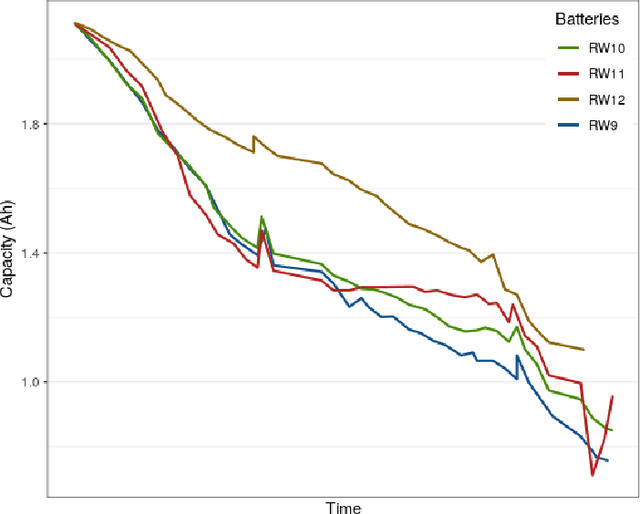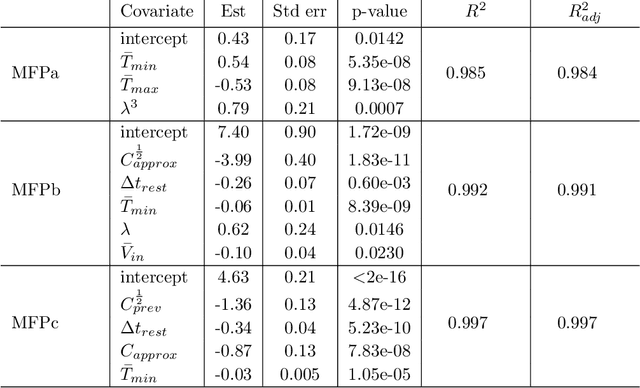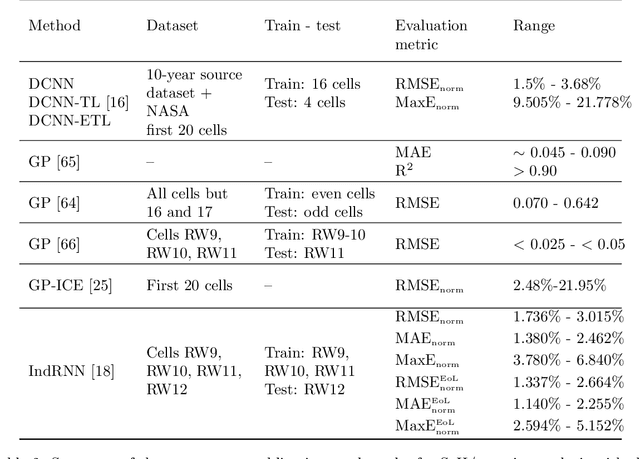Simple statistical models and sequential deep learning for Lithium-ion batteries degradation under dynamic conditions: Fractional Polynomials vs Neural Networks
Paper and Code
Feb 16, 2021



Longevity and safety of Lithium-ion batteries are facilitated by efficient monitoring and adjustment of the battery operating conditions: hence, it is crucial to implement fast and accurate algorithms for State of Health (SoH) monitoring on the Battery Management System. The task is challenging due to the complexity and multitude of the factors contributing to the battery capacity degradation, especially because the different degradation processes occur at various timescales and their interactions play an important role. This paper proposes and compares two data-driven approaches: a Long Short-Term Memory neural network, from the field of deep learning, and a Multivariable Fractional Polynomial regression, from classical statistics. Models from both classes are trained from historical data of one exhausted cell and used to predict the SoH of other cells. This work uses data provided by the NASA Ames Prognostics Center of Excellence, characterised by varying loads which simulate dynamic operating conditions. Two hypothetical scenarios are considered: one assumes that a recent true capacity measurement is known, the other relies solely on the cell nominal capacity. Both methods are effective, with low prediction errors, and the advantages of one over the other in terms of interpretability and complexity are discussed in a critical way.
 Add to Chrome
Add to Chrome Add to Firefox
Add to Firefox Add to Edge
Add to Edge